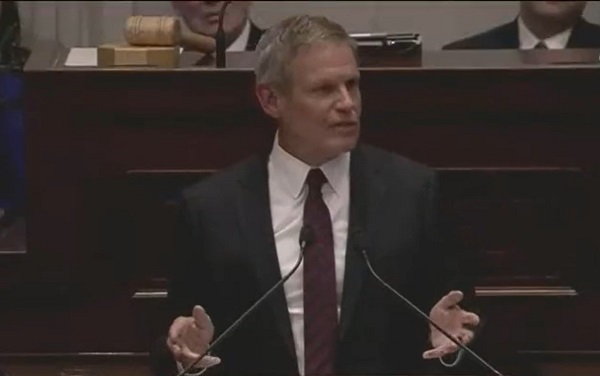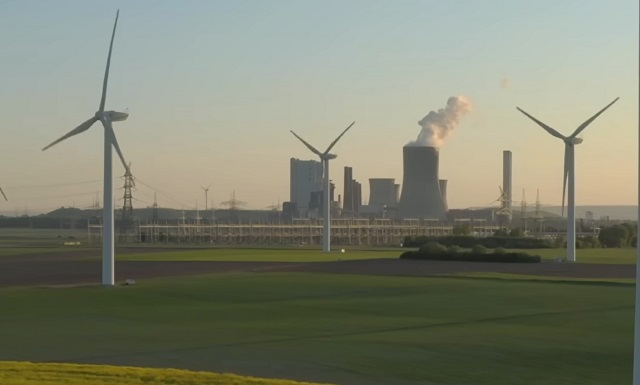Economy
Feds ‘net-zero’ agenda is an anti-growth agenda
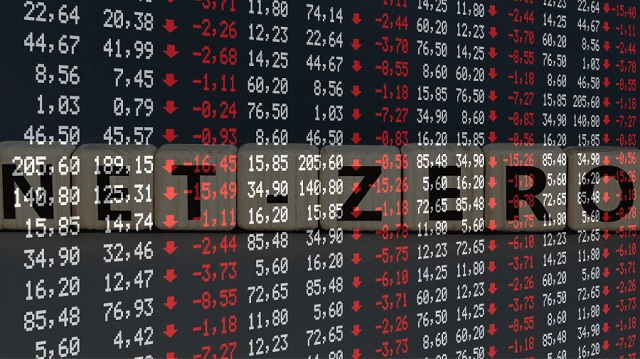
From the MacDonald Laurier Institute
By Chris Sankey
Canada’s goal should not be to eliminate fossil fuels, but to carry out a steady and manageable reduction of emissions
The federal government is pushing an aggressive emissions reduction strategy that could devastate the Canadian economy and threaten our way of life. This isn’t just about the oil & gas industry. Port-related industries, transportation, infrastructure, health and education, and countless other sectors will be collateral damage. As will the standard of living of everyday Canadians.
One need only peek behind the curtain to understand the current course of federal policy.
Ottawa’s anti-fossil fuels agenda appears to be rooted in the ideas of two ideologically driven behind-the-scenes entities: Senators for Climate Solutions (SFCS) and Clean Energy Canada (CEC).
A group of 44 Canadian Senators, led by Sens. Mary Coyle and Stan Kutcher (both of Nova Scotia), launched SFCS in the fall of 2022. The Senators also recruited a team of interns from GreenPAC, a Toronto-based environmental lobby group, to help get SFCS up and running. GreenPAC Executive Director Sarah Van Exan told blog The Energy Mix at the time that the group had recently assigned its first-ever Senate intern to the office of Sen. Coyle.
“We saw the chance to lend critical capacity—with communication, coordination, and policy research—to help them get established,” Van Exan told The Energy Mix in an email. “The group’s cross-partisan aim and determination to put a climate lens on legislation, advance climate solutions, and hold the government’s feet to the fire is exciting.”
This team of ‘climate-minded’ Senators draws lightly on expertise from Western Canada, let alone calling on experienced energy experts from Alberta. Of the dozen experts listed on the SFCS website, just two – University of Calgary Geosciences professor Sara Hastings-Simon and Vancouver Island farmer Andrew Rushmere – are based in Western Canada.
12 years earlier, Clean Energy Canada was established as a subsidiary of the Morris J. Wosk Centre for Dialogue at Simon Fraser University (SFU) in Burnaby, BC. The group is the brainchild of Merran Smith, a figure The Province once described as “the spawn of the tendrilous and pervasive eco-activist group Tides Canada and [SFU].” Smith first came to prominence in the early 2000s while campaigning to protect coastal BC’s Great Bear Rainforest, rubbing elbows with the likes of Tzeporah Berman (an anti-pipeline acticist so extreme she was booted from the Alberta NDP’s Oil Sands Advisory Group). Other members of the team include BC Green Party alum Evan Pivnick and Electric Vehicle (EV) evangelist Meena Bibra. According to its own website, CEC’s mission is to “accelerate the transition to a renewably powered economy” via “inform[ing] policy leadership.”
Are these the sorts of people the Trudeau Government should be listening to on climate matters?
Let me give you a few stats and you be the judge. I recently had a chance to listen to Adam Waterous, the CEO of the Waterous Energy Fund and former Global Head of Investment Banking at Scotia Waterous. He is, I may add, an incredibly intelligent businessman who lives and breathes energy.
Adam shared some surprising facts about EVs. For instance, he mentioned that it takes five times the amount of oil to build an EV than it does to build a conventional gas-powered vehicle. In order offset this difference, a person must drive an EV 120,000 kms using the electrical grid. Meaning, every time we build an EV demand for oil goes up, not down. Further, an EV battery does not last the lifetime of the vehicle itself, crapping out in as little as 8 years. This expands the EV’s carbon footprint even further as producing a single EV-grade battery emits over seven tonnes of C02e emissions. All told, an EV has roughly double the production footprint of a conventional vehicle.
Still convinced we are saving the planet?
The BC provincial government is forging ahead with a set of policies that its own modelling shows will make BC’s economy $28 billion smaller in 2030 than it would be absent these policies. (To put this number into context, this is roughly what the province spends on health care each year). This will set prosperity back more than a decade. This remarkable finding emerges from looking beyond the government’s glossy reports to the raw modelling results of the estimated economic impact of CleanBC policies that are studiously ignored in its public communication materials.
Similarly, Alberta Electric System Operator (AESO) estimates the cost of achieving a net zero electricity grid by 2050 to be nearly $200 billion, while the AESO Net-Zero Emissions Pathways report estimates that accelerating this timeline to 2035 could add an extra $45 to $52 billion. (That is without factoring in the costs of co-generation or the full distribution system and integration costs). Moving to net zero by 2050 will also eliminate 10,000 direct jobs in the oil and gas sector and an estimated 2.7 million jobs in total.
All provinces, and every Canadian household, will be impacted by the federal emissions reduction strategy. However, no province will be impacted more than Alberta. The currently federal modelling used to develop the clean electricity regulations (CER) does not properly represent Alberta’s Electricity Market and thus is unable to adequately forecast the economics of energy production. Canada’s proposed emissions intensity limit effectively requires natural gas backed power plants to sequester an annual average of 95% of all associated emissions through CCUS or other technologies (CCUS) or other technologies. As of writing, no natural gas generation with CCUS modifications has ever hit this mark.
The CERs create significant investment risk for (CCUS) projects as the physical standard for the technology is unproven. Adding insult to injury, the federal government is proposing a 20-year end-of-life for natural gas facilities built prior to January 2025. This will result in some of the cleanest gas plants in the world being shut down decades before they run their useful life; all while Asia continues to burn coal at a record pace.
Canada is about to enter a world of self-inflicted economic pain at precisely the time that Indigenous communities are finally starting harness their resource wealth. We finally made it to the corporate table where we have a seat, a say and ownership – and now the federal government wants to take it all away. How is that for bad timing?
Without reliable and affordable energy, Canadians will be left choosing between shelter, food and keeping the lights on. I don’t know about you, but I will not follow those politicians and organizations driving our climate policies to extremes, into ankle deep water, but I will listen to and follow serious people like Adam Waterous.
The goal for Canada should not be to eliminate fossil fuels. The goal needs to be a steady and manageable reduction of emissions. We must get our ethical and clean energy out to the world. Our economic future depends on it.
Chris Sankey is a former elected Councilor for Lax Kw’alaams Band, businessman and Senior Fellow for the Macdonald-Laurier Institute.
Economy
‘Gambling With The Grid’: New Data Highlights Achilles’ Heel Of One Of Biden’s Favorite Green Power Sources

 From the Daily Caller News Foundation
From the Daily Caller News Foundation
By NICK POPE
New government data shows that wind power generation fell in 2023 despite the addition of new capacity, a fact that energy sector experts told the Daily Caller News Foundation demonstrates its inherent flaw.
Wind generation fell by about 2.1% in 2023 relative to 2022 generation, despite the 6 gigawatts (GW) of wind power capacity that came online last year, according to data published Tuesday by the U.S. Energy Information Administration (EIA). That wind power output dropped despite new capacity coming online and the availability of government subsidies highlights its intermittency and the problems wind power could pose for grid reliability, energy sector experts told the DCNF.
The decrease in wind generation is the first drop on record with the EIA since the 1990s; the drop was not evenly distributed across all regions of the U.S., and slower wind speeds last year also contributed to the decline, according to EIA. The Biden administration wants to have the American power sector reach carbon neutrality by 2035, a goal that will require a significant shift away from natural gas- and coal-fired power toward wind, solar and other green sources.

A table depicting the decrease of wind power generation in 2023 relative to 2022. (Screenshot via U.S. Energy Information Administration)
“Relying on wind power to meet your peak electricity demands is gambling with the grid,” Isaac Orr, a policy fellow at the Center of the American Experiment who specializes in power grid-related analysis, told the DCNF. “Will the wind blow, or won’t it? This should be a moment where policymakers step back and consider the wisdom of heavily subsidizing intermittent generators and punishing reliable coal and gas plants with onerous regulations.”
Between 2016 and 2022, the wind industry received an estimated $18.6 billion worth of subsidies, about 10% of the total amount of subsidies extended to the energy sector by the U.S. government, according to an August 2023 EIA report. Wind power received more assistance from the government than nuclear power, coal or natural gas over the same period of time.
“This isn’t subsidies per kilowatt hour of generation. It’s raw subsidies. If it were per kilowatt hour of generation, the numbers would be even more extreme,” Paige Lambermont, a research fellow at the Competitive Enterprise Institute, told the DCNF. “This is a massive amount of money. It’s enough to dramatically alter energy investment decisions for the worse. We’re much more heavily subsidizing the sources that don’t provide a significant portion of our electricity than those that do.”
“Policy that just focuses on installed capacity, rather than the reliability of that capacity, fails to understand the real needs of the electrical grid,” Lambermont added. “This recent disparity illustra
Wind power’s performance was especially lackluster in the upper midwest, but Texas saw more wind generation in 2023 than it did in 2022, according to EIA. Wind generation in the first half of 2023 was about 14% lower than it was through the first six months of 2022, but generation was higher toward the end of 2023 than it was during the same period in 2022.
In 2023, about 60% of all electricity generated in the U.S. came from fossil fuels, while 10% came from wind power, according to EIA data. Beyond generous subsidies for preferred green energy sources, the Biden administration has also aggressively regulated fossil fuels and American power plants to advance its broad climate agenda.
Biden’s Climate Bill Boosted An Offshore Wind Giant, But His Economy Brought It To The Brink https://t.co/AF7SPT2FNu
— Daily Caller (@DailyCaller) November 3, 2023
The Environmental Protection Agency’s (EPA) landmark power plant rules finalized this month will threaten grid reliability if enacted, partially because the regulations are likely to incentivize operators to close plants rather than adopt the costly measures required for compliance, grid experts previously told the DCNF. At the same time that the Biden administration is effectively trying to shift power generation away from fossil fuels, it is also pursuing goals — such as substantially boosting electric vehicle adoption over the next decade and incentivizing construction of energy-intensive computer chip factories — that are driving up projected electricity demand in the future.
“The EIA data proves what we’ve always known about wind power: It is intermittent, unpredictable and unreliable,” David Blackmon, a 40-year veteran of the oil and gas industry who now writes and consults on the energy sector, told the DCNF. “Any power generation source whose output is wholly dependent on equally unpredictable weather conditions should never be presented by power companies and grid managers as safe replacements for abundant, cheap, dispatchable generation fueled with natural gas, coal or nuclear. This is a simple reality that people in charge of our power grids too often forget. Saying that no doubt hurts some people’s feelings, but nature really does not care about our feelings.”
Blackmon also pointed out that, aside from its intermittency, sluggish build-out of the transmission lines and related infrastructure poses a major problem for wind power.
“Wind power is worthless without accompanying transmission, yet the Biden administration continues to pour billions into unreliable wind while ignoring the growing crisis in the transmission sector,” Blackmon told the DCNF.
Another long-term issue that wind power, as well as solar power, faces is the need for a massive expansion in the amount of battery storage available to store and dispatch energy from intermittent sources as market conditions dictate. By some estimates, the U.S. will need about 85 times as much battery storage by 2050 relative to November 2023 in order to fully decarbonize the power grid, according to Alsym Energy, a battery company.
The White House and the Department of Energy did not respond to requests for comment.
Alberta
Alberta government should eliminate corporate welfare to generate benefits for Albertans

From the Fraser Institute
By Spencer Gudewill and Tegan Hill
Last November, Premier Danielle Smith announced that her government will give up to $1.8 billion in subsidies to Dow Chemicals, which plans to expand a petrochemical project northeast of Edmonton. In other words, $1.8 billion in corporate welfare.
And this is just one example of corporate welfare paid for by Albertans.
According to a recent study published by the Fraser Institute, from 2007 to 2021, the latest year of available data, the Alberta government spent $31.0 billion (inflation-adjusted) on subsidies (a.k.a. corporate welfare) to select firms and businesses, purportedly to help Albertans. And this number excludes other forms of government handouts such as loan guarantees, direct investment and regulatory or tax privileges for particular firms and industries. So the total cost of corporate welfare in Alberta is likely much higher.
Why should Albertans care?
First off, there’s little evidence that corporate welfare generates widespread economic growth or jobs. In fact, evidence suggests the contrary—that subsidies result in a net loss to the economy by shifting resources to less productive sectors or locations (what economists call the “substitution effect”) and/or by keeping businesses alive that are otherwise economically unviable (i.e. “zombie companies”). This misallocation of resources leads to a less efficient, less productive and less prosperous Alberta.
And there are other costs to corporate welfare.
For example, between 2007 and 2019 (the latest year of pre-COVID data), every year on average the Alberta government spent 35 cents (out of every dollar of business income tax revenue it collected) on corporate welfare. Given that workers bear the burden of more than half of any business income tax indirectly through lower wages, if the government reduced business income taxes rather than spend money on corporate welfare, workers could benefit.
Moreover, Premier Smith failed in last month’s provincial budget to provide promised personal income tax relief and create a lower tax bracket for incomes below $60,000 to provide $760 in annual savings for Albertans (on average). But in 2019, after adjusting for inflation, the Alberta government spent $2.4 billion on corporate welfare—equivalent to $1,034 per tax filer. Clearly, instead of subsidizing select businesses, the Smith government could have kept its promise to lower personal income taxes.
Finally, there’s the Heritage Fund, which the Alberta government created almost 50 years ago to save a share of the province’s resource wealth for the future.
In her 2024 budget, Premier Smith earmarked $2.0 billion for the Heritage Fund this fiscal year—almost the exact amount spent on corporate welfare each year (on average) between 2007 and 2019. Put another way, the Alberta government could save twice as much in the Heritage Fund in 2024/25 if it ended corporate welfare, which would help Premier Smith keep her promise to build up the Heritage Fund to between $250 billion and $400 billion by 2050.
By eliminating corporate welfare, the Smith government can create fiscal room to reduce personal and business income taxes, or save more in the Heritage Fund. Any of these options will benefit Albertans far more than wasteful billion-dollar subsidies to favoured firms.
Authors:
-

 conflict1 day ago
conflict1 day ago‘Got Played’: Israel Reportedly Suspicious Biden Admin Had Backroom Talks With Mediators Over Ceasefire Deal
-

 illegal immigration2 days ago
illegal immigration2 days agoPanama Elects President Vowing Shutdown Of Key Routes To US Used By Over Half A Million Migrants
-

 Fraser Institute1 day ago
Fraser Institute1 day agoTrudeau and Ford should attach personal fortunes to EV corporate welfare
-
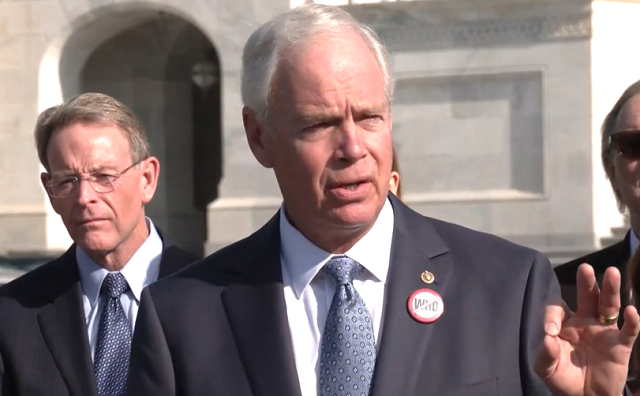
 Great Reset2 days ago
Great Reset2 days agoAll 49 GOP senators call on Biden admin to withdraw support for WHO pandemic treaty
-
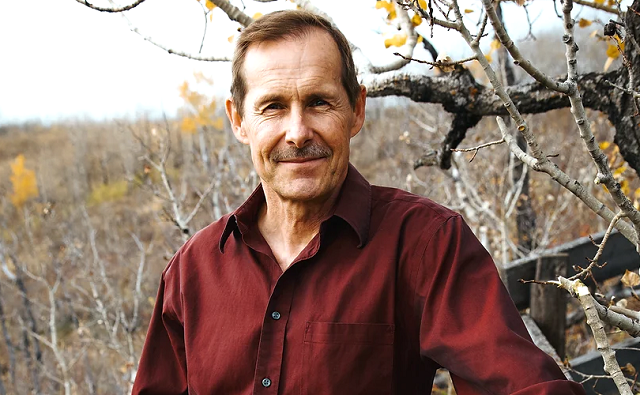
 Alberta2 days ago
Alberta2 days agoCanadian Christian chiropractor fights ‘illegal’ $65,000 fine for refusing to wear mask
-

 John Stossel23 hours ago
John Stossel23 hours agoThe Swamp Survived: Why Trump Failed to “Drain the Swamp”
-

 Media1 day ago
Media1 day agoCBC tries to hide senior executive bonuses
-

 Energy1 day ago
Energy1 day agoU.S. EPA Unveils Carbon Dioxide Regulations That Could End Coal and Natural Gas Power Generation






